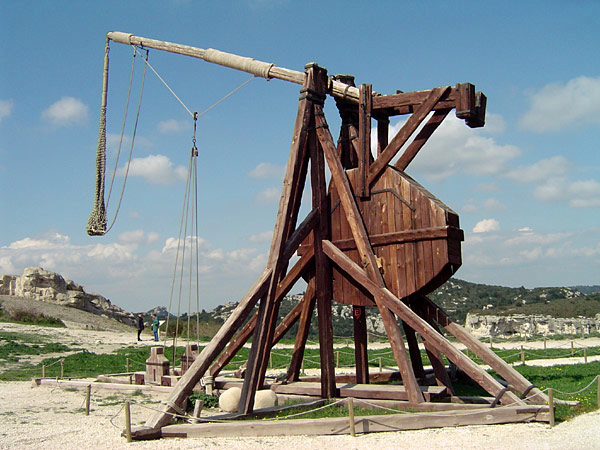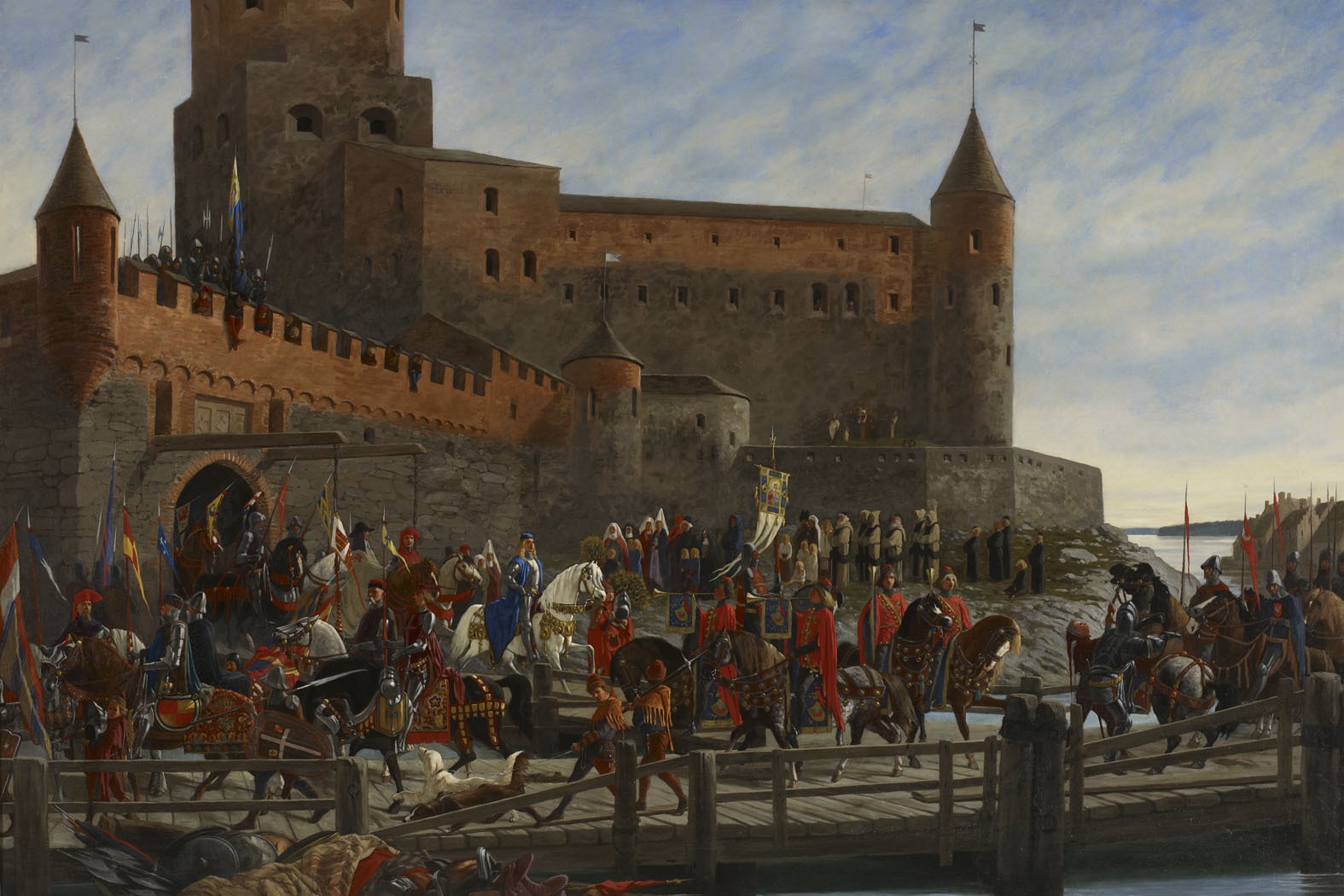|
Siege Of Älvsborg (1439)
The siege of Älvsborg (Swedish language, Swedish: ''Belägringen av Älvsborg''; Norwegian language, Norwegian: ''Beleiringen av Älvsborg'') occurred in 1439, beginning in the summer and lasting 10 weeks. It eventually ended with a Norwegian retreat after a relief force led by Ture Turesson attacked the besiegers. Background The years in the aftermath of the Engelbrekt rebellion were very uneasy in Sweden. From the perspective of the Swedes, they did not know exactly what to support, being whether to return to the Kalmar Union or to elect a new Swedish king. After a while, they did however decide that under all circumstances, all fortresses were to be controlled by "trustable Swedish men". This action would require fighting with certain Swedes who were not loyal to Karl Knutsson, and Eric of Pomeranians men still held multiple castles around Sweden. The campaign against Eric would be led by Karl Knutsson. Prelude In the spring of 1439, Eric of Pomerania had resumed his ... [...More Info...] [...Related Items...] OR: [Wikipedia] [Google] [Baidu] |
Old Älvsborg
Älvsborg (), now generally known as Old Älvsborg () or Älvsborg Castle () to distinguish it from the later New Älvsborg and Älvsborg Fortress, was a medieval castle situated on the rocky outcrop known as Klippan, on the south bank of the Göta Älv river within the urban area of the modern city of Gothenburg. It was demolished in the late seventeenth century, but some of its ruins are still visible today, close to the southern pylon of the Älvsborg Bridge. History During the Middle Ages, the Göta Älv was Sweden's sole point of access to the North Sea, as the coastline to the north (Bohuslän) was part of Norway until 1658, while the area to the south (Halland) was part of Denmark until 1645. The river mouth, and by extension the heights at Klippan overlooking it, therefore had immense strategic significance. Älvsborg Castle is first mentioned in written sources during the reign of Albert, King of Sweden, King Albert (1364-89), but seems to have been built slightly earl ... [...More Info...] [...Related Items...] OR: [Wikipedia] [Google] [Baidu] |
Sieges Involving Sweden
A siege () . is a military blockade of a city, or fortress, with the intent of conquering by attrition, or by well-prepared assault. Siege warfare (also called siegecrafts or poliorcetics) is a form of constant, low-intensity conflict characterized by one party holding a strong, static, defensive position. Consequently, an opportunity for negotiation between combatants is common, as proximity and fluctuating advantage can encourage diplomacy. A siege occurs when an attacker encounters a city or fortress that cannot be easily taken by a quick assault, and which refuses to surrender. Sieges involve surrounding the target to block provision of supplies and reinforcement or escape of troops (a tactic known as "investment"). This is typically coupled with attempts to reduce the fortifications by means of siege engines, artillery bombardment, mining (also known as sapping), or the use of deception or treachery to bypass defenses. Failing a military outcome, sieges can often be deci ... [...More Info...] [...Related Items...] OR: [Wikipedia] [Google] [Baidu] |
1439 In Europe
. Year 1439 ( MCDXXXIX) was a common year starting on Thursday of the Julian calendar. Events January–March * January 4 – A truce is signed at Breslau between King Albert of Hungary and King Casimir IV of Poland to end the 8-month war between the two kingdoms. * January 9 – A rebellion by peasants in Finland against the Swedish government, led by Anian Daavid, is ended by the Swedish Army after intervention by the Bishop of Turku. After confiscation of some untillable land to compensate other landowners for damages, the peasants are pardoned upon taking an oath never to rise up against the Swedish Crown again. * January 10 – Pope Eugene IV, who had convened the Council of Ferrara a year earlier to fight the reforms of the Council of Basel, orders the transfer of its participants from Ferrara to Florence. * January 17 – As part of Ming China's campaign against the Möng Mao kingdom in south China, General Fang Zheng, commander of 295,000 troo ... [...More Info...] [...Related Items...] OR: [Wikipedia] [Google] [Baidu] |
Attacks On Castles In Sweden
Attack may refer to: Warfare and combat * Attack (fencing) * Charge (warfare) * Offensive (military) * Strike (attack) Books and publishing * ''The Attack'' (novel), a book * '' Attack No. 1'', comic and animation * Attack! Books, a publisher * ''Attack!'' (publication), a tabloid publication of the National Alliance from 1969 to 1978 * ''Der Angriff'', a.k.a. ''The Attack'', a newspaper franchise * In newspaper headlines, to save space, sometimes " criticise" Films and television * '' Attack! The Battle of New Britain'', a 1944 American armed forces documentary film * ''Attack'' (1956 film), also known as ''Attack!'', a 1956 American war film * ''Attack'' (2016 film), a 2016 Telugu film * ''Attack'' (2022 film), a 2022 Hindi film * ''The Attack'' (1966 film), an Australian television play * ''The Attack'' (2012 film), a 2012 film directed by Ziad Doueiri * "The Attack" (''Australian Playhouse'') * "The Attack", a season 7 episode of ''Lego Ninjago: Masters of Spinj ... [...More Info...] [...Related Items...] OR: [Wikipedia] [Google] [Baidu] |
Sieges Of The Middle Ages
A siege () . is a military blockade of a city, or fortress, with the intent of conquering by attrition, or by well-prepared assault. Siege warfare (also called siegecrafts or poliorcetics) is a form of constant, low-intensity conflict characterized by one party holding a strong, static, defensive position. Consequently, an opportunity for negotiation between combatants is common, as proximity and fluctuating advantage can encourage diplomacy. A siege occurs when an attacker encounters a city or fortress that cannot be easily taken by a quick assault, and which refuses to surrender (military), surrender. Sieges involve surrounding the target to block provision of supplies and reinforcement or escape of troops (a tactic known as "investment (military), investment"). This is typically coupled with attempts to reduce the fortifications by means of siege engines, artillery bombardment, mining (military), mining (also known as sapping), or the use of deception or treachery to bypass ... [...More Info...] [...Related Items...] OR: [Wikipedia] [Google] [Baidu] |
History Of Gothenburg
The history of Gothenburg () begins with the foundation of the city in 1621, although by that time people had already been living in the area for thousands of years, since the Neolithic Period, and moreover there had already been a series of earlier settlements on the lower Göta Älv, including one which also bore the name Gothenburg. The Göta Älv has been of crucial importance throughout Swedish history as the country's only direct outlet to the North Sea, and thus to the wider world beyond the Baltic Sea. However, for many centuries the borders with Norwegian Bohuslän and Danish Halland ran right up to the river mouth, making Swedish settlements in the area extremely vulnerable to attack. The threat was significantly reduced by the conquests of both Bohuslän and Halland in the mid-seventeenth century, which gave Gothenburg the security to expand into Sweden's largest port and one of its main industrial centres. Prehistory The southwestern coast of the Scandinavian Peninsul ... [...More Info...] [...Related Items...] OR: [Wikipedia] [Google] [Baidu] |
Conflicts In 1439
Conflict may refer to: Social sciences * Conflict (process), the general pattern of groups dealing with disparate ideas * Conflict continuum from cooperation (low intensity), to contest, to higher intensity (violence and war) * Conflict of interest, involvement in multiple interests which could possibly corrupt the motivation or decision-making * Cultural conflict, a type of conflict that occurs when different cultural values and beliefs clash * Ethnic conflict, a conflict between two or more contending ethnic groups * Group conflict, conflict between groups * Intragroup conflict, conflict within groups * Organizational conflict, discord caused by opposition of needs, values, and interests between people working together * Role conflict, incompatible demands placed upon a person such that compliance with both would be difficult * Social conflict, the struggle for agency or power in something * Work–family conflict, incompatible demands between the work and family roles of a ... [...More Info...] [...Related Items...] OR: [Wikipedia] [Google] [Baidu] |
Sieges Involving Norway
A siege () . is a military blockade of a city, or fortress, with the intent of conquering by attrition, or by well-prepared assault. Siege warfare (also called siegecrafts or poliorcetics) is a form of constant, low-intensity conflict characterized by one party holding a strong, static, defensive position. Consequently, an opportunity for negotiation between combatants is common, as proximity and fluctuating advantage can encourage diplomacy. A siege occurs when an attacker encounters a city or fortress that cannot be easily taken by a quick assault, and which refuses to surrender. Sieges involve surrounding the target to block provision of supplies and reinforcement or escape of troops (a tactic known as "investment"). This is typically coupled with attempts to reduce the fortifications by means of siege engines, artillery bombardment, mining (also known as sapping), or the use of deception or treachery to bypass defenses. Failing a military outcome, sieges can often be deci ... [...More Info...] [...Related Items...] OR: [Wikipedia] [Google] [Baidu] |
Karl Knutsson
Karl Knutsson Bonde ( 1408–1470), also known as Charles VIII and called Charles I in Norwegian contexts, was King of Sweden (1448–1457, 1464–1465 and 1467–1470) and King of Norway (1449–1450). He rose in Swedish politics because Erik of Pomerania was unpopular and became regent after a rebellion by Engelbrekt Engelbrektsson. He held powerful posts, notably in Finland, where he acted semi-independently. After King Christopher's death in 1448, Karl was elected king of Sweden and briefly king of Norway (1449–1450), but was forced to relinquish the latter to Christian I of Denmark. His rule faced opposition from the nobility and church, especially amid war with Denmark from 1451. His consolidation of power alienated key factions like the Oxenstierna and Vasa families, leading to growing resistance that resulted in two rebellions, in 1457 and 1464. Early life Karl Knutsson Bonde was born in October 1408 or 1409, at Ekholmen Castle, the son of Knut Tordsson ( B ... [...More Info...] [...Related Items...] OR: [Wikipedia] [Google] [Baidu] |
Suecia Antiqua Et Hodierna
''Suecia Antiqua et Hodierna'' ("Ancient and Modern Sweden") is a collection of engravings collected by Erik Dahlbergh during the middle of the 17th century. ''Suecia Antiqua et Hodierna'' can be described as a grand vision of Sweden during its period as a great power. Dahlberg's direct source of inspiration was the topographical publications issued by the Swiss publisher Matthäus Merian. In 1661 Dahlberg was granted a royal privilege enabling him to realize his plans, which kept him occupied for a good decade, and a work that would not be printed until after his death. In its final state ''Suecia Antiqua et Hodierna'' comprised three volumes containing 353 plates. Gallery File:Suecia 2-008 ; Arx Gripsholm.jpg, Gripsholm Castle File:Suecia 2-007 ; Trosa.jpg, Trosa File:Suecia 2-004 ; Strängnäs.png, Strängnäs File:Suecia 1-013 ; Stockholm från öster-right side detail.jpg, Detail of Stockholm File:Suecia 3-017 ; Charlottenborg och Motala kyrka i Suecia antiqua et hodierna. ... [...More Info...] [...Related Items...] OR: [Wikipedia] [Google] [Baidu] |
Engelbrekt Rebellion
The Engelbrekt rebellion (''Engelbrektsupproret'') was an uprising during 1434–1436 led by Swedish miner and nobleman Engelbrekt Engelbrektsson and directed against Eric of Pomerania, the king of the Kalmar Union. The uprising, with its center in Dalarna and Bergslagen, spread throughout Svealand and Götaland. The rebellion caused erosion within the unity of the Kalmar Union, leading to the temporary expulsion of Danish forces from Sweden. Background In 1434, Sweden was part of the Kalmar Union, a personal union that united Sweden with Denmark and Norway under a single monarch, Eric of Pomerania. The Swedes were not happy with the Danes' frequent warfare on Schleswig, Holstein, Mecklenburg, and Pomerania, which disturbed Swedish exports (notably iron) to the Continent. During the Danish-Holstein-Hanseatic war, while the exports were brought to a halt, the collection of taxes continued, enraging Swedish peasants. Furthermore, the centralization of government in D ... [...More Info...] [...Related Items...] OR: [Wikipedia] [Google] [Baidu] |




